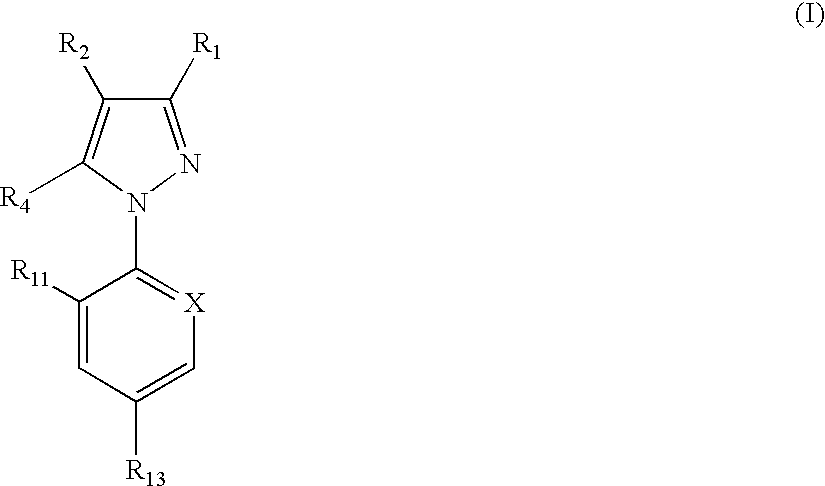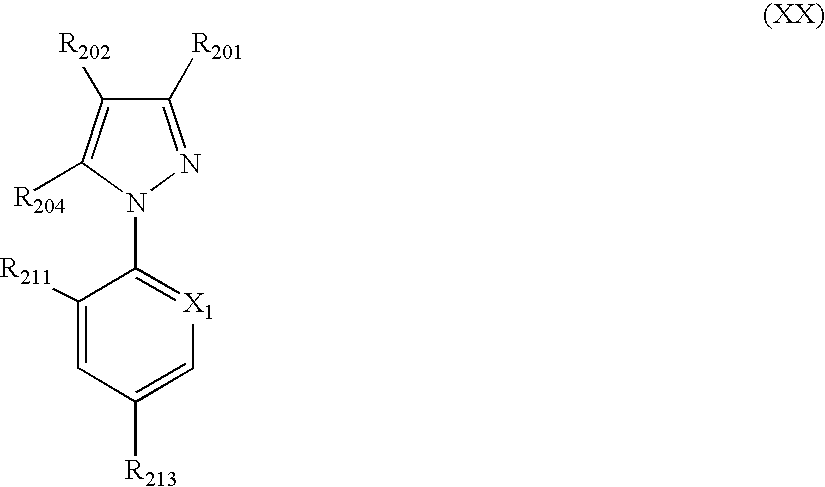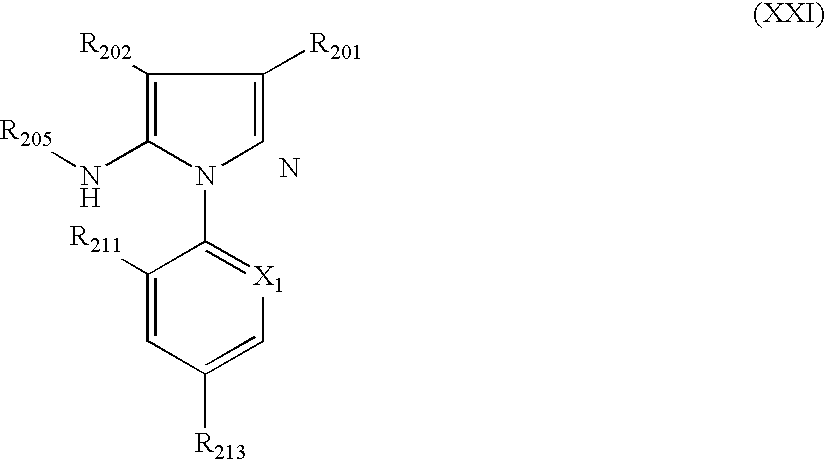Control of arthropods in rodents
a technology of arthropods and rodents, applied in the field of controlling arthropods in rodents, can solve the problems of increasing the risk of lyme disease, and less likely than the nymphs to have sufficient time to transmit the infection, and achieve the effect of preventing the transmission of diseases
- Summary
- Abstract
- Description
- Claims
- Application Information
AI Technical Summary
Benefits of technology
Problems solved by technology
Method used
Image
Examples
example 1
[0221]A Protecta Jr. (Bell Laboratories, Madison, Wis.) mouse bait box is modified as follows: a cotton yam wick is stapled to the underside of the lid just in front of the feeding area entry; two adsorbent nylon strips are affixed to the outer edges of the food block trays. Two to three ml. of an oil-based composition comprising 3-cyano-1-(2,6-dichloro-4-trifluoromethyl)phenyl-5-N-(ethoxyacetyl)-N-methyl-4-trifluoromethylsulfinylpyrozole (0.1% to 5.0%, w / w) is applied to the wick and strip, and the lid is closed and locked with a set screw.
[0222]Five to thirty modified bait boxes are set out per hectare of property where mice are expected to be. Boxes are rebaited and wicks and strips replenished at 4 week intervals from April through August. Rodents entering the boxes come into contact with the wicks and / or strips containing the ectoparasiticide resulting in long-term control of Arthropods, especially ticks.
PUM
| Property | Measurement | Unit |
|---|---|---|
| size | aaaaa | aaaaa |
| heights | aaaaa | aaaaa |
| temperature | aaaaa | aaaaa |
Abstract
Description
Claims
Application Information
 Login to View More
Login to View More - R&D
- Intellectual Property
- Life Sciences
- Materials
- Tech Scout
- Unparalleled Data Quality
- Higher Quality Content
- 60% Fewer Hallucinations
Browse by: Latest US Patents, China's latest patents, Technical Efficacy Thesaurus, Application Domain, Technology Topic, Popular Technical Reports.
© 2025 PatSnap. All rights reserved.Legal|Privacy policy|Modern Slavery Act Transparency Statement|Sitemap|About US| Contact US: help@patsnap.com



